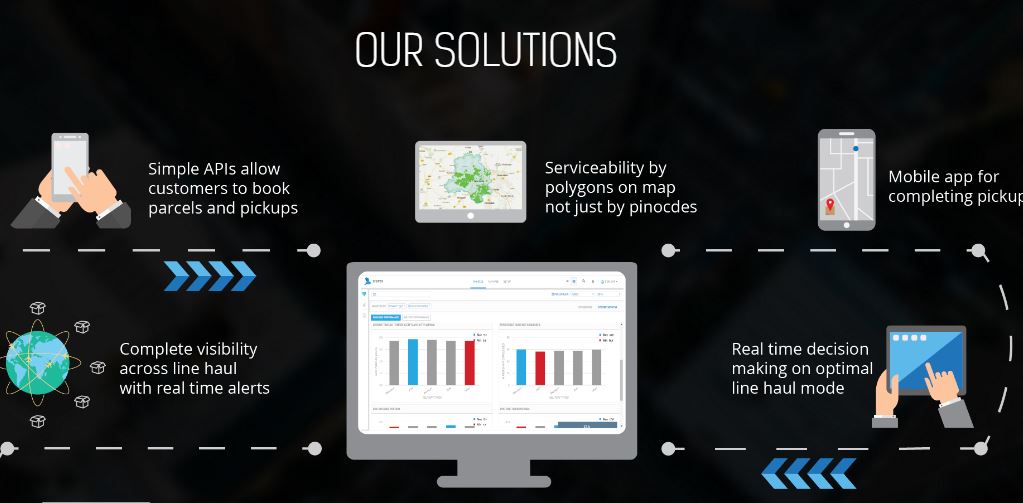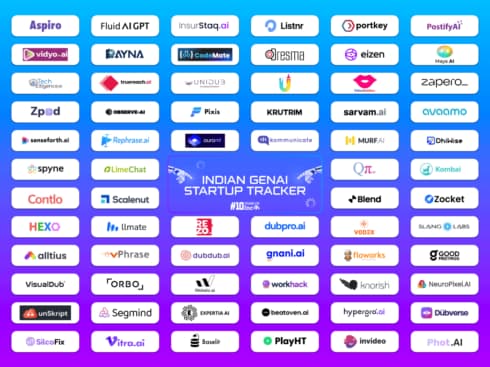[Note: This article is part of The Junction Series. We will be covering the EnterpriseTech sector in detail at The Junction 2017 in Jaipur. Learn more about The Junction here!]
It all began with a bicycle.
Soham Chokshi and Dhruv Agarwal knew of each other since their college days at IIT Madras and Delhi days, respectively. But their friendship really began when they started working together at Deutsche Banking, braving the big, bad world of investment banking. Becoming flatmates was the natural next extension in cementing their friendship, and so they decided to do exactly that.
“Dhruv and I had a lot of common interests. For instance, we both love cycling. And we had this expensive INR 15K-INR 20K cycle that we had asked shipped from a courier company to our new place in Gurugram. Everything else arrived alright, but our cycle was nowhere to be found when the movers finally showed up,” Soham begins with a reminiscent chuckle.
“We ran around from pillar to post and the courier people were like – it’s in our warehouse. And we will get to it, when we get to it. The cycle was stuck in their warehouse for three whole months before they finally got around to it,” he adds.
The duo, whose passion for exercise and cycling had been put on hold while they went around trying to get ahold of their beloved cycle, suddenly found themselves in the middle of a problem faced by millions of Indians all over the country. As Soham puts it,
“For a logistics company that processes about 5 Lakh parcels on an average every day, your particular item is one among many. They cannot possibly care about it. But for you, that parcel is your life and you wait impatiently till you send/receive that parcel. And the issue arises, when you don’t know where your precious cargo is when you are desperately waiting for it – the issue of visibility.”
Soham and Dhruv had hit upon the mother lode of a problem plaguing logistics and courier companies across India – that of providing analytics to the companies in order to keep track of each parcel and provide visibility to their customers. And thus, data analytics company for logistics companies, Shipsy was born in early 2015 in Gurugram – founded by Soham, Dhruv, Himanshu Gupta, and Sahil Arora – all IIT alums, incidentally.
“There is a serious mismatch between what the average customer expects and what the courier company is able to deliver in terms of first-mile visibility and, after finding this root cause, that of solving location-specific issues in real time, we decided to build out a platform to address the same,” he adds.
Problem-Solving For The Supply Chain Segment – Cornerstone of Shipsy Philosophy
“We are a purely B2B platform,” says Soham. “The first idea was just to provide a real-time connect for the first-mile problem (company-customer) in terms of transparency.” The first product was a basic analytics dashboard that enabled companies to keep track of the location of each parcel and send the information out to customers as and when they required, should there be any delay in the arrival/sending of the item. It was a platform for supply-chain companies who managed to get onboard Shipsy and started using the product.
“But as it happened, the deeper we got into the world of logistics, the more the problem and the root cause emerged as something more than just providing the customer proper information,” he adds.
According to Soham, Shipsy was operating for around three months when the pivot occurred. “The so-called ‘hyperlocal boom’ started gaining traction right around the time we commenced operations in 2015. But by the end of the year, it was a total bust, as solving the problem of first, middle and last-mile logistics requires a lot of time and operations. Large companies such as DTDC are more capable of solving these macro issues, simply because of the resources available to them.
“And this was why we decided to shift focus from creating capacity in a place where so much capacity already exists and ensure that companies are made more agile and startup-like by using data and analytics from the ground up on three fronts – visibility, service, and operational efficiency.”
Building API’s, Solving Service Deficiency In Tier II Cities And More
“Essentially, we have built APIs that talk across systems in the middle mile, rider areas. These APIs are for understanding and analysing riders and hubs in a particular logistics company, which in turn will speed up the delivery process. We make it easy to do more with what you have,” says Soham.
The APIs come with a dashboard that displays insights – for warehouse management, supply chain management and comes under ‘operational efficiency.’ “Riders sometimes underutilise the time given to them and actually take more idle time, the dashboard – which works in real-time – lets the company see which rider is doing what at exactly what time. Warehouse hubs too are analysed from an efficiency and capacity standpoint and, with the dashboard, it is easy to have all the data at your fingertips.”
The other problem that Shipsy is looking to solve is that of service-level deficiency. “Delivery boys sometimes give out fake updates. Wherein, they say they have been unable to deliver a parcel, or the person was not at home or a different reason, when they are nowhere near the area of the receiver and had no intention of doing so in the first place.”
According to Soham, this is more of Tier II-level problem which carries a fine of up to INR 5K for fake updates. “By geo-coding the location and using latitude logs of updates, and four-five other parameters that include the number of calls made, time of call etc., we are able to provide a better insight as to how this service deficiency can be gradually assuaged by our clients.”
As time is money, shaving off time is the third focus of Shipsy’s analytics programme. “A parcel changes hands 8-9 times before it reaches the recipient – such as the delivery boy who picks up the parcel, the attendant who handles it at the warehouse, the supervisor who sorts it etc. And there is a small time gap, which we internally call ‘Delta T’ (varies from client to client) which is used to figure out at scale which gap takes more time and how this gap can be reduced,” he adds.
“Any SaaS-Based Company Requires R&D Investment Before Profits”
Shipsy counts logistics brands such as DTC, DotZot, Holisol among its clients and works on a SaaS model, where it charges per consignment/rider on a unit level. It charges a monthly licensing fee for the use of the Shipsy analytics programme. “We are generating revenue at the moment,” divulges Soham when asked about unit economics. “But the thing is, we believe that any SaaS-based company requires R&D investment before profits. So, we could be profitable if focused on just the sales side of the business, but Shipsy is spending on research.”

In a total team of 25, Shipsy has a team of eight from IIT Madras and Delhi who work exclusively on the back end of the programme – Android, content, data science and design. “The market for what we are doing is huge in Southeast Asia and UAE, so at the moment we are building out our suite for expansion,” shares Soham.
Growth, too is an important metric when it comes to starting up a business. “For us, the number of consignments processed counts a growth, as that is primarily what we are doing at a unit level. And on an average, we have seen a 45% M-o-M growth over there.” He also adds that the number gets more discrete as more clients are onboarded, but it has not declined.
Startups such as LogiNext, FarEye are Shipsy’s immediate competitors. FarEye has even caught the eye of Microsoft Accelerator and made the Deloitte Tech Fast50. But as Soham says, “Previously, logistics companies would go to an IBM or an Infosys, large established companies for solving their pain points. But with the advent of tech, data is so much more easily available, that I would say it is the big companies who are losing out on business. It all comes down to answering this simple question – are companies looking for services or people products?”
But competition from agile, fellow startups is not Soham’s immediate worry. “You have to understand, our strength is data infrastructure. Our competitors provide daily analytics which is complex, but what is even more complex is historical analytics, and using it to better the processes today – we use millions of data points over geographies, demographics to name just two variables to provide these insights over a given period of time. And that’s what sets us apart,” he adds.
Diversify, Diversify, Diversify – Future Plans
As Soham puts it, “The logistics space is vast. But the supply chain sector is characterised by a large number of small moving parts. So our big plan is to diversify the platform into different areas such as logistics, cold chain, trucking, and air freight, just to name a few.”
The bigger plan, according to Soham is to turn different, fragmented sectors into decision-making industries. “But mostly, it is about hitting internal transaction targets after which we are looking to fundraise in the next four months,” he ends.
For a startup that has raised an undisclosed angel round in September 2015, according to Soham and already gone to raise less than $1 Mn in March 2016 from DTDC for a 20% stake, the future is full of plans and possibilities.
Editor’s Note
India’s logistics & courier industry is expected to be worth US$ 301.89 Bn by 2020 from $130 Bn in 2012-13, according to the latest figures available with India Brand Equity Foundation, a trust established under the commerce ministry.
With the tremendous growth of the ecommerce space in recent years, India spends around 14.4% of its GDP on logistics and transportation, as compared to less than 8% spent by other developing countries. This drastic gap in figures is only because the Indian logistics industry is currently extremely unorganised.
But with startups such as Shipsy, LogiNext and others taking up the mantle of addressing the root cause of the problems plaguing the sector, and coming up with scalable solutions as well as running a lean business model, it is only a matter of time before the race for the largest market share heats up in earnest and there emerges a winner. It remains to be seen, though, who will take the crown.
































 Ad-lite browsing experience
Ad-lite browsing experience